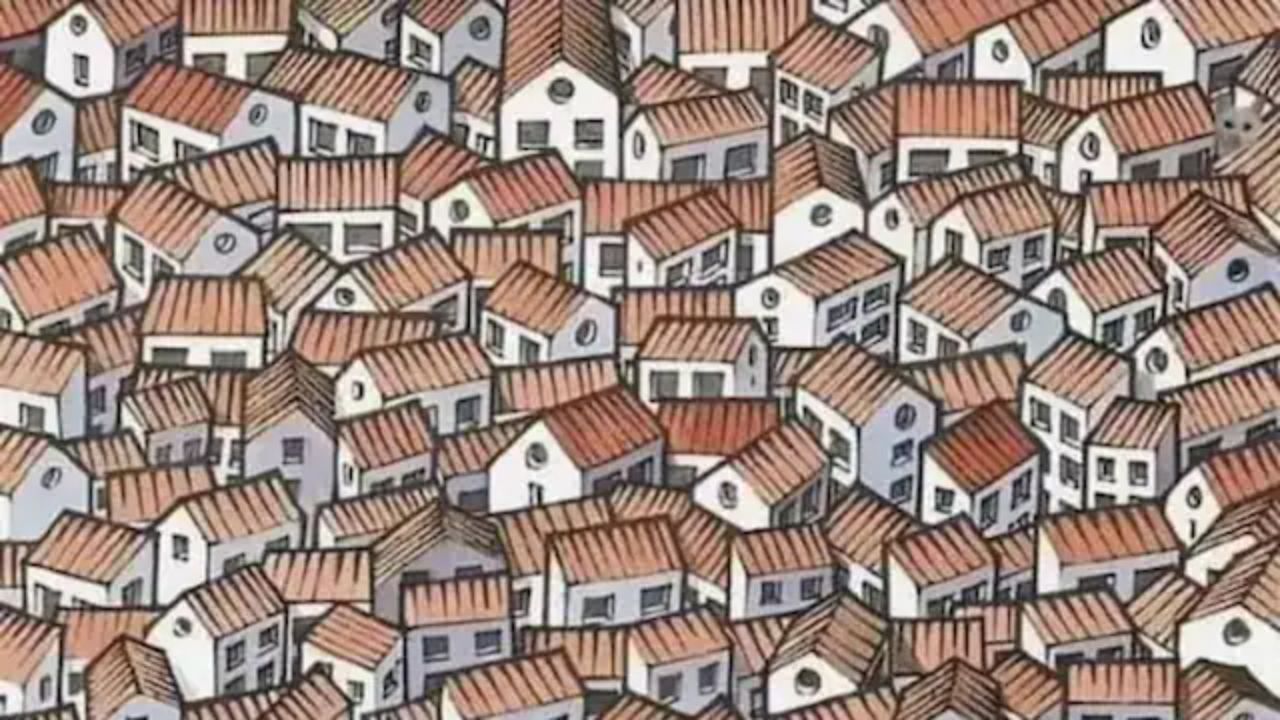Test Your Brainpower: Optical illusions play a strange game with the senses, making simple things appear complex and vice versa. One such well-known illusion is attempting to spot a hidden cat in a picture with house colors. This puzzle picture has become viral on social media, and most people are unable to spot the cleverly hidden feline within eight seconds. Only those with keen eyes can solve this tough test in no time. If you enjoy brain puzzles, then you will love this optical illusion.
This particular illusion involves a house with shadows that create patterns that make it difficult to separate objects. A cat is camouflaged somewhere within the image within the structure, blending seamlessly with the surroundings. The majority of onlookers are at first unable to spot it, only to gain an appreciation at a later stage of just how well it had been blended into the visual scheme. The test is simple but completely sneaky. find the cat before it times out. Illusions like this are usually infuriating for people who can’t, but the excitement of a flash of insight is tremendous.
Tests like this are designed to challenge visual acuity, perceptual attention, and mental quickness. Optical illusions stimulate the brain by forcing it to make sense of ambiguous or misleading visual information. This deception, in particular, requests audience members to note subtle patterns and contrast changes so that they might discover the hidden cat. It is an excellent exercise in refinement of observational skills and in enjoying the unraveling of a mental puzzle. Literature shows that repeatedly solving such visual puzzles sharpens attention and problem-solving skills and hence has benefits extending beyond recreation. If it is too difficult to find the cat in eight seconds, looking more closely at the photograph usually works.
The trick is to look for shadows, unusual color combinations, and odd shapes that are not part of the expected pattern. Sometimes, stepping back and looking at the picture from a different perspective makes it easier to identify the hidden item. These techniques are widely used in high-visual-recognition professional use. Even designers and artists professionally use the same techniques to create optical illusions in paintings by creating color gradients and shadowing effects. Optical illusions have fascinated people for centuries and are often used in psychological experiments and artwork.
The ability of the human mind to see pictures differently based on the angle, light, and viewpoint is an indicator of just how complex it is for the brain to be able to process pictures. The viral challenge gives another exciting entry into the increasingly long list of mind-blowing illusions that shock and fascinate people from all over the world. If you like brain teasers and would enjoy testing your observation skills, trying to find this concealed cat may be an enjoyable challenge. Whether or not you succeed, these illusions are a great way to exercise mental sharpness and enjoy it at the same time.









